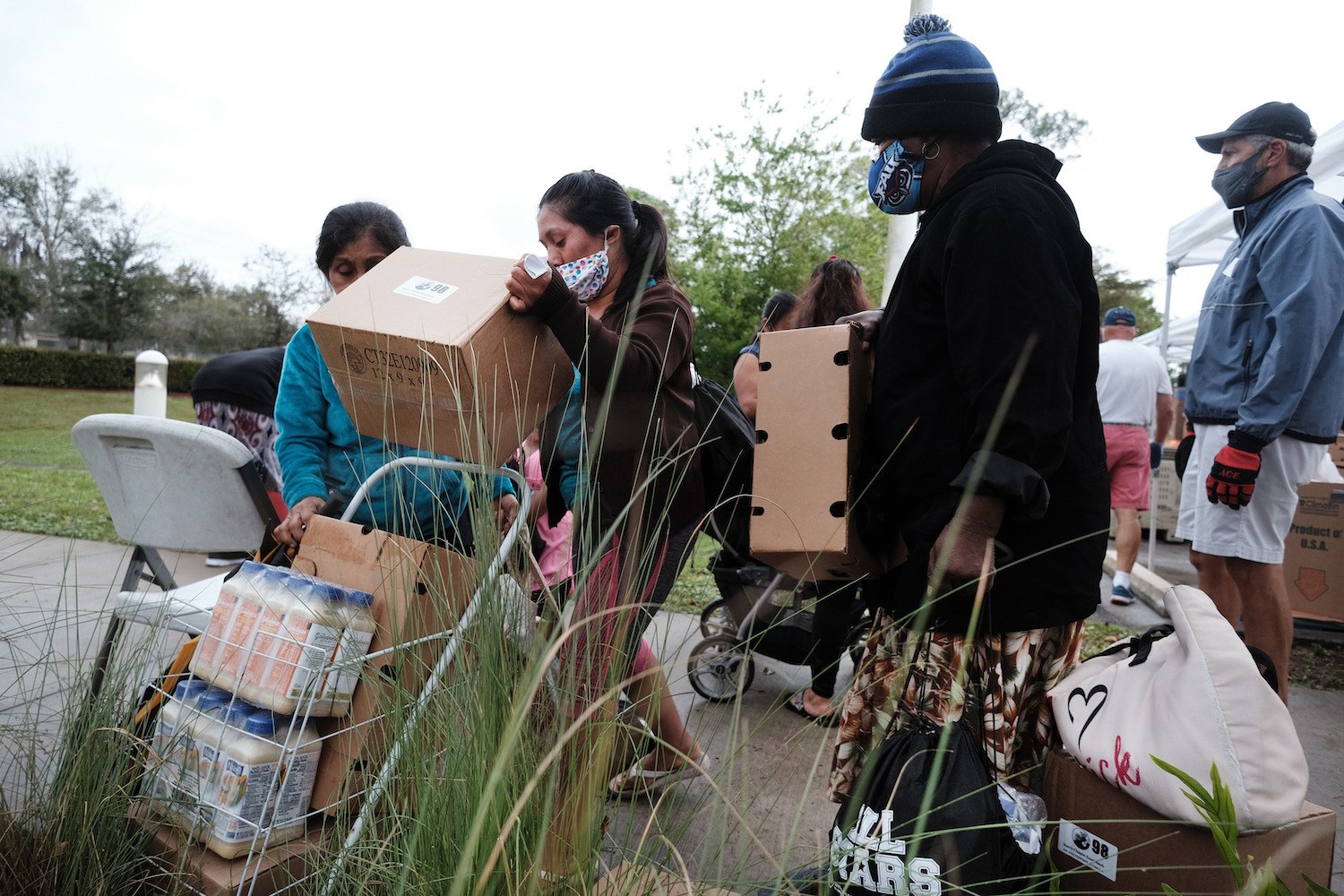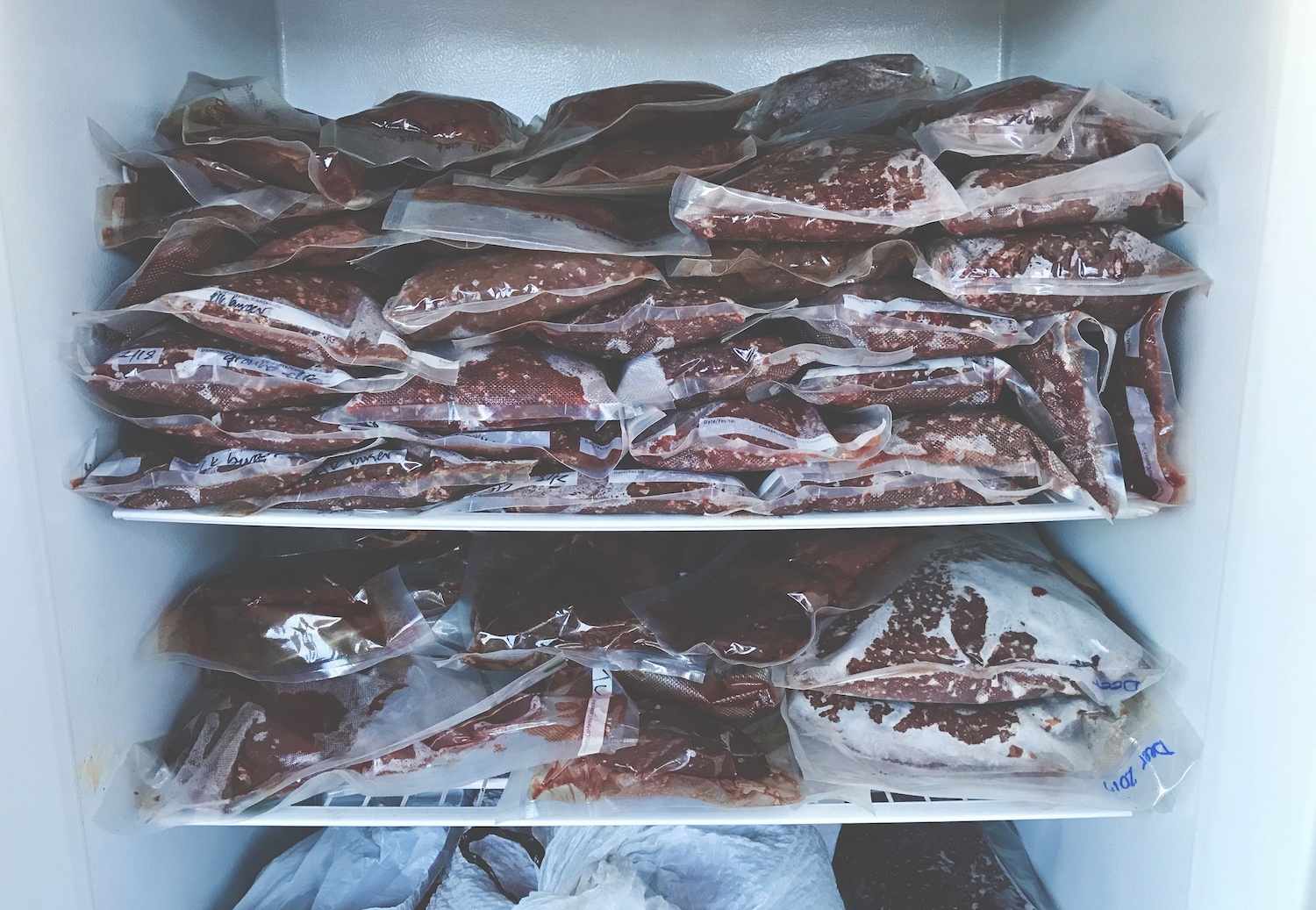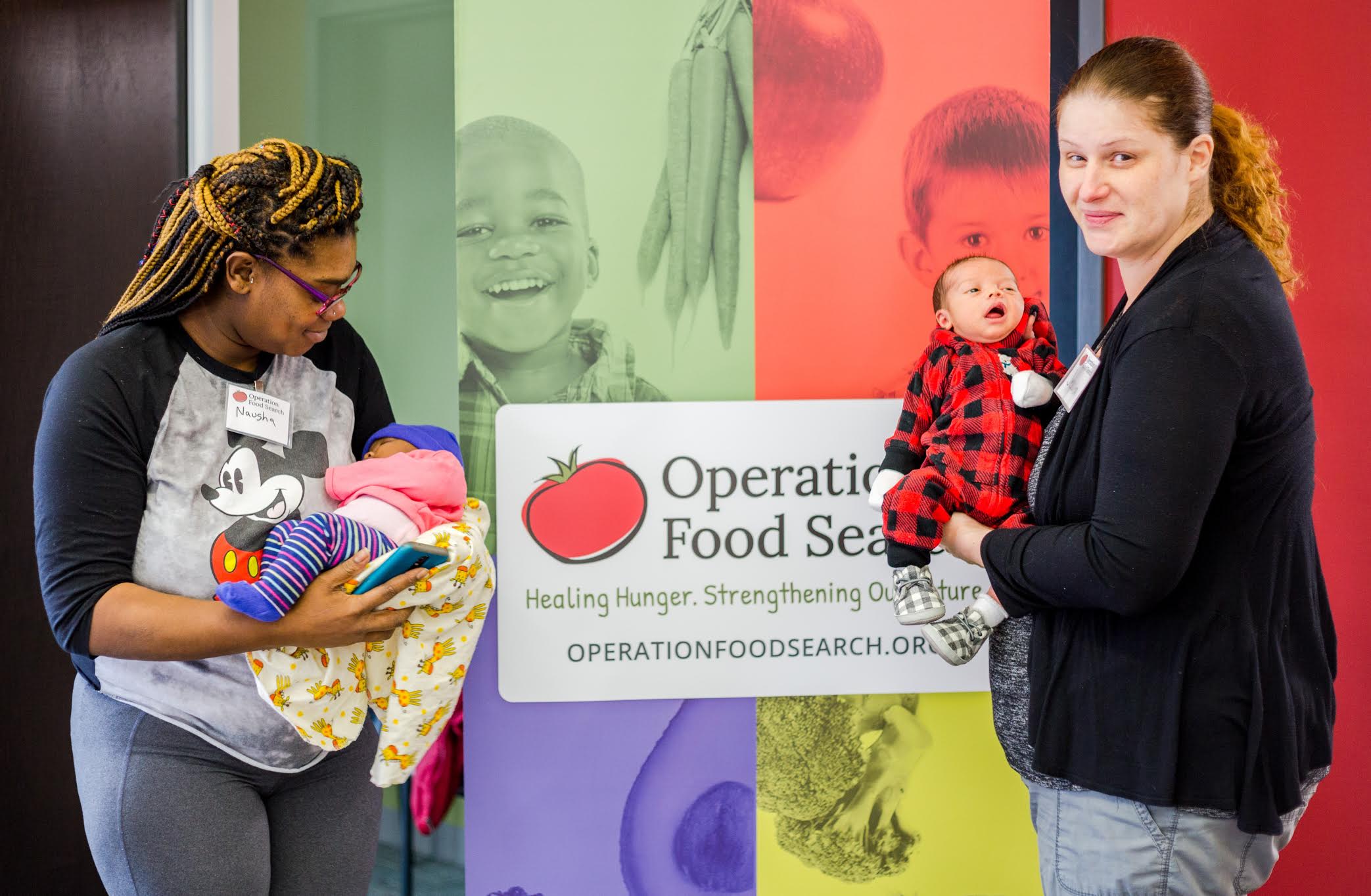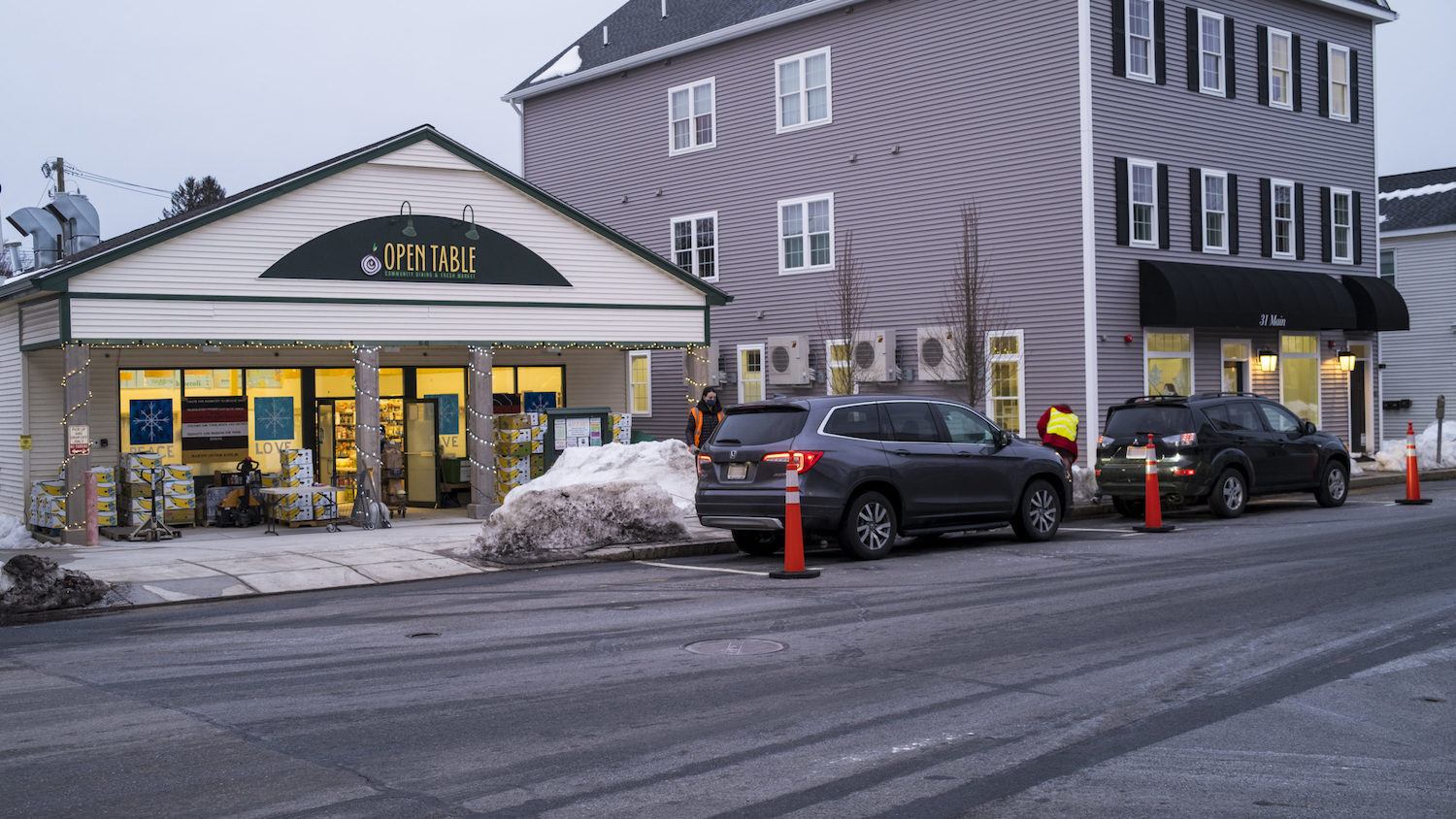
Colin M. Valentine
In a time when pre-packed food boxes became the norm, some food banks have moved to give clients online “dignity of choice.”
Just as grocery stores are making it possible for Americans to do more of their shopping online through apps like Instacart and FreshDirect, so too are food pantries embracing digital choice.
This article is republished from Food Bank News, whose mission is to end hunger by advancing best practices in hunger relief. You can read the original article here.
While some pantries had begun experimenting with online ordering for clients before Covid-19, others made the switch as a way to preserve dignity of choice at a time when pre-packed boxes and bags became the norm to meet the nationwide increase in food insecurity.
Now, online ordering is colliding with the ongoing surge in drive-through food distributions, bringing a small but growing number of pantries to a higher level of service that emphasizes both choice and convenience.
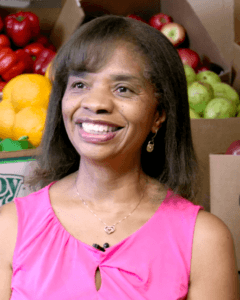
Food Bank News
Picking up food ordered online via Portland Open Bible Community Pantry’s drive-through service takes about two minutes, said Betty Brown, Executive Director.
“It’s one of those ‘Why haven’t we been doing this all along?’ things,” said Courtney Wright, Senior Food Assistance Network Strategist at Oregon Food Bank.
In Oregon, the Portland Open Bible Community Pantry operated much like a supermarket before Covid, Betty Brown, Executive Director, said. When Covid hit, Brown’s son, Aaron, started planning a drive-up version of the shopping-style model.
Wright from the Oregon Food Bank was eager to assist. “When I told her what we’re going to do, she said, ‘Okay, what do you need?’” Ms. Brown said.
With a $5,000 grant from the Oregon Food Bank and support from the local health authority, Mr. Brown enlisted the aid of a techie friend and they got to work on an order form. Now, anyone with access to the internet can get the online form, choose their language, check off the foods they want, and submit it.
“We will continue to have made-to-order drive up boxes, we’ll continue to refine that process, because it keeps people separate and keeps people healthy.”
The form, utilizing a software called Wufoo, translates orders into Word documents, which get printed onto sticky paper that volunteers then use to fill orders. “We make it work super quickly,” Mr. Brown said, adding that the new operation required adding five additional volunteer roles to the pantry’s roster for the purposes of implementation.
Since POBC Pantry’s network reflects those who attend the pantry, volunteers who speak Cantonese, Vietnamese, Russian, and Spanish are on hand to offer translation services. The online order form reflects this linguistic diversity, too.
The Browns recognize the benefits of the drive-up model, which about half of all visitors use. The time it takes to pick food up through the drive-up service takes around two minutes, while waiting in line to get food inside the pantry can be an hours-long ordeal.
“We’ve had these unintended waves of last-minute cancellations when there’s been a snowstorm, and we can say, ‘Come pick up your groceries today.’”
The drive-up efforts have also made the pantry’s offerings more accessible to elderly and disabled people. Almost two-thirds of the pantry’s clientele are elderly, Ms. Brown said.
“We will continue to have made-to-order drive up boxes, we’ll continue to refine that process, because it keeps people separate and keeps people healthy,” she said.
Oregon Food Bank is on board with online ordering as well. Wright said the food bank is now working to scale online ordering across its entire pantry network.

Food Bank News
Cold weather in New England led Open Table to introduce online ordering as a replacement to open-air client-choice food distributions, said Jeanine Calabria, Executive Director.
In Massachusetts, the coming of winter led Open Table in Maynard to build an online ordering system so people wouldn’t have to brave outdoor client-choice food distributions.
After launching a pilot with a housing development in September 2020, Jeanine Calabria, Executive Director, hired a consultant with grant money earmarked for weatherization to build out an online ordering system that was live by December.
“This was pushed by being in New England, because it was getting cold and we didn’t think we could continue to operate in the wintertime in a parking lot,” Calabria said. Eighty of the 200 or so families Open Table sees each week now use the online service, which is available in five languages — English, Mandarin, Spanish, Portuguese, and Russian.
Calabria combined inspiration she got from a pantry in Newbury, Mass., which uses Google Forms to take online orders, and the Greater Boston Food Bank’s use of customer relations management software called OasisInsight to develop a sign-up system that she said is extremely responsive to clients.
“We’re now tracking what people like, so we’re letting go of, for instance, frozen vegetables. People just don’t want them.”
It allows for real-time communication about ever-changing food availability and pantry updates. “We’ve had these unintended waves of last-minute cancellations when there’s been a snowstorm, and we can say, ‘Come pick up your groceries today,’” Calabria said, as one example.
The system also helps the pantry decide what to offer based on client order history. “We’re now tracking what people like, so we’re letting go of, for instance, frozen vegetables,” Calabria said. “People just don’t want them,” she said.

Food Bank News
Clients of Lakeview Pantry in Chicago can also pick up the food they ordered at partner locations, said Jennie Hull, Chief Program Officer.
For clients for whom online ordering is its own barrier, Open Table has a network of weekend volunteers who do outreach and place online orders on their behalf. “They do a call pool and call people to take their order and submit their order form,” Calabria said. While not a substitute for the relationship-building that Calabria observed during in-person food distribution, the call pool has maintained some of the communal atmosphere of the pantry’s network.
In Chicago, Lakeview Pantry has always prided itself on being more like a boutique grocery store than a traditional pantry, said Jennie Hull, Chief Program Officer. “Our biggest two words we use to describe the work that we do is dignity and respect,” she said.
The onset of Covid meant the pantry had to close down its in-person operations and switch to distributing pre-packed boxes in March 2020. Demand was so high, Hull said, that the pantry ended up using Wrigley Field as a packing and distribution site.
“When people come to pick up their food, they don’t even have to get out of their car.”
Even before the pandemic, Lakeview had started an online market. “You can go online and pick your groceries, just like you would if you were using Instacart,” Hull said. Clients choose which products they want and a time to pick them up with just a few clicks.
In some cases, Lakeview Pantry partners with other service providers, schools, and community centers, where people can use the online market and Lakeview Pantry delivers orders to partnering locations.
“We’re working to expand that program because we continue to see that as an opportunity for people to still get choice,” Hull said. “When people come to pick up their food, they don’t even have to get out of their car.”

